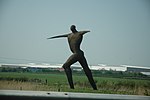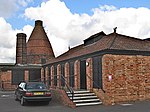Sydenham House, Somerset
BridgwaterFormer manors in SomersetGrade II listed buildings in SedgemoorGrade II listed houses in SomersetSydenham family residences

Sydenham House, the manor house of the ancient manor of Sydenham in the parish of Wembdon, Somerset, England, is a grade II listed building, constructed in the early 16th century and refronted and rebuilt after 1613. In 1937, British Cellophane Ltd set up production and built extensive factories on 59 acres (24 ha) of land ("Sydenham Manor Fields") adjacent to the manor house. Production ceased in 2005 and between 2010 and 2015 the industrial site was razed to the ground. In 2015 the razed site is owned by EDF Energy, which in 2012 purchased the manor house with the former factory site, intended for construction of temporary accommodation for 1,000 workers.
Excerpt from the Wikipedia article Sydenham House, Somerset (License: CC BY-SA 3.0, Authors, Images).Sydenham House, Somerset
Geographical coordinates (GPS) Address Nearby Places Show on map
Geographical coordinates (GPS)
| Latitude | Longitude |
|---|---|
| N 51.1406 ° | E -2.9859 ° |
Address
TA6 4NZ
England, United Kingdom
Open on Google Maps








